STAR’s Reading FC Hall of Fame
The Hall of Fame is a work-in-progress project scheduled to complete on the 150th anniversary of Reading FC’s first match in 1872. Each year between 2016 and 2022 11-25 new names will be added (inducted) into the Hall of Fame.
In total there will be about 150 inductees fairly even spread across the 15 decades of the club’s history. Nomination is open to any individual that has played an exceptional or distinctive part in the life of the club. The Hall of Fame should not be seen as a ‘long service’ award. Specifically, it should include players, managers, officials, journalists and supporters.
A range of well-informed supporters has put forward initial recommendations to STAR. These have then been considered in terms of merit and popularity by a panel consisting of STAR Board members and outside experts who will determine the final selection of the latest round of inductees each year. Supporters are welcome to take part in future initial recommendation stages. Please email media@star-reading.org for further details.
1870s
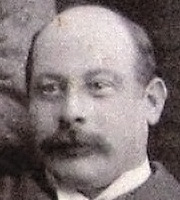
Edward Haygarth
Reading career: 1872-76
c40 appearances
c10 goals
Claim to fame: Reading’s first star player and first England international.
Edward Brownlow Haygarth was an inspiration to Reading FC in its very earliest amateur days. It is likely he played in the club’s first ever game. He is the club’s first recorded goal-scorer, first hat-trick scorer and first international player, as well as the second ever captain of the club. Haygarth’s links to the great and good of football’s early days would almost certainly have helped the status of the new Reading club.
Read more...
Born in Cirencester in 1854 Haygarth came to Reading as part of his training to be a solicitor. He was an all-round sportsman, capable in athletics and a good bat for Reading Cricket Club. At football he played in a position described as ‘back’ in an era where he could face up to seven forwards. He was described as a having a powerful and accurate kick, fearless and heavy and able on occasions to dribble right through the opposition to score.
Newspaper reports enthused about his play and soon he went on to represent Berkshire, to play for the select Slough-based club Swifts and in 1875, at the age of 20, to play at The Oval in the 4th ever football international against Scotland. In the FA records he is credited as being a Swifts player but there is no doubt he was also captaining and playing for Reading regularly at the time. He acquitted himself well in the international, a 2-2 draw, and continued to captain Reading for a while before moving to London, where he played for Wanderers, and then Cirencester where he set up in legal practice.
He retired from football at 23 but continued to play cricket as a leading batsman for Circencester Cricket Club and briefly as a first class cricketer for Gloucestershire. In later life he was a founder member of what became Circencester Golf Club and an important figure in the local community there.
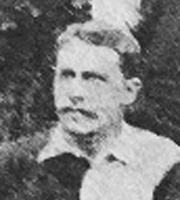
Harry Rogers
Reading career: 1872-79
c80 appearances
c1 goal
Claim to fame: A Reading captain who died on the field of play.
Harry (Henry Francis) Rogers was Reading third, and at the time longest serving captain. It is possible he played in the first ever Reading games, for which no line-ups survive, as he is mentioned in the first team photograph. Rogers was a tall, broad-shouldered, full or half back with good dribbling skills and he also represented Reading Hornets and the Berkshire XI in his playing career which ended with his abrupt and untimely death on the field.
Read more...
Leading the side against Pilgrims on 25 October 1879, despite feeling ill, Rogers succumbed to an epileptic fit during the first half. Consequent upon his death Reading abandoned their fixtures for the rest of the year. A substantial collection for a memorial for Rogers was raised by club members and this still exists as part of his grave in Leamington Spa. Rogers was an architect’s clerk and 25 at the time of his death a much loved member of the club.
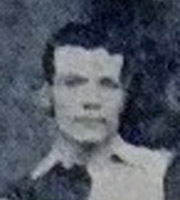
John Morgan
Reading career: 1878-79
14 appearances
Claim to fame: Cup-winning full back and huge figure in early Welsh football.
Though John Morgan only played one season for the club (1878-79) he became our first acknowledged international player (capped for Wales v Scotland) and would surely have won ‘player of the season’ had such an award been in existence. Morgan was a school-master and a former Cambridge Blue. He played full back for Reading in our narrowly-lost, glamour FA Cup tie against eventual winners Old Etonians and in all the club’s matches in the first ever Berks & Bucks Cup.
Read more...
His well-directed corner caused the scrimmage from which the winning goal was scored in the final. At the end of the season he moved to another teaching post in Derby and, despite the best efforts of the committee, could not be enticed back. Morgan is the first Reading player on record to acknowledge the positive effect that spectators could have on the players. He later played for Notts Co and captained Wales, winning 10 caps in all, and scoring against England..
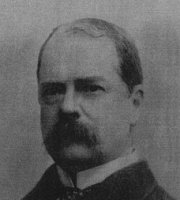
James Simonds
Reading career: 1871-1895
Claim to fame: First, and long-standing, President of the club throughout its amateur days
James Simonds was elected President of the Club on its foundation and retained this position until June 1895 when he joined the breakaway faction of Reading Amateurs as their President. Often described in the early days as the ‘father of Reading FC’ or its greatest friend although there is no evidence he actually played for the club.
Read more...
Simonds was 22 when elected President yet was already an influential and respected figure in the town which was a useful asset to the club and the sport. He often presided over the AGM and probably helped with the finances of the club in difficult times. He held a senior position in Simonds Bank in King St, Reading and also served for long periods on the town council. Simonds was a true Reading patriot from a long-established local family, usually better known for their brewing interests in the town. James also held key offices in the cricket and rowing club and Berkshire CCC. He died in 1905.
The Simonds connection still tenuously exists with the club today. Simonds contemporary relative George Blackall Simonds was the sculptor who created the statue of the Maiwand Lion in Forbury Gardens from which the club’s mascot – Kingsley – is derived.
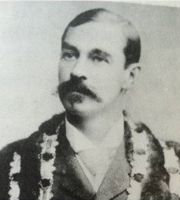
John Martin
Reading career: 1871-c1892
c35 appearances
3 goals
Claim to fame: Influential figure in developing the amateur Reading FC
John Wessley Martin was quite possibly at the foundation meeting of Reading FC and in its first ever match. He’s in the first line-up that we know of for sure and in the first ever team photo, dating from 1872. The indications are that he probably wasn’t a very good footballer, spending about half his 35 appearances in goal and the other half in the forward line (3 goals) and often being dropped for big matches at which he then umpired.
Read more...
But he was a very important administrator, taking on the key role of club secretary from the ineffectual Joseph Sydenham in 1875 when the club was drifting. By 1879 it had become one of the more powerful clubs in the south of England and won the inaugural Berks & Bucks Cup that year. Martin was the secretary of the B&B FA and also founded the Reading Challenge Cup in 1881. This competition stimulated a real growth in the interest in football in the town from which Reading FC was to benefit a decade later. In 1882 he ceased his active involvement with the club but remained a vice-president for several years and a source of support during some years of struggle.
Martin was clearly a strong personality, established as a leading solicitor by 1881 and living in prosperous Downshire Square. He was an active worshipper at Reading Minster and Mayor of Reading by the age of 40 and again at 58 – and a force in local amateur dramatics. Martin had two younger brothers who also played for Reading; Bill was an architect, while Fred became a local solicitor.
1880s
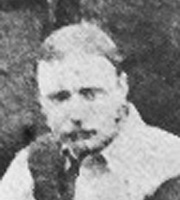
Charles Field
Reading career: 1876-87
c150 appearances
c30 goals
Claim to fame: A loyal club man and a great townsman.
Charles Field was the eldest of the three Field brothers and though he did not reach the same heights as his brother Edgar on the playing field he made more of a contribution to Reading FC and the life of the town. He made his debut in 1876, was a member of Reading’s first trophy-winning team in 1879 and continued to play, usually on the left wing, to the advanced age (for those times) of 37, his last game being in 1887. In all he played ‘first class football’ for 20 years.
Read more...
Charles captained the team on occasion, represented both Berks & Bucks and Oxfordshire in county matches and sat on the club committee for several years – all the while combining his playing career with high profile roles in the town as the deputy coroner, solicitor, councillor and, later in life, three times Mayor of Reading. He died in 1936 at the age of 86, recognised as the ‘Father of Reading Corporation’ and a freeman of the borough. His association with Reading FC continued into the 21st century as the club’s solicitors in Madejski’s time were Field, Seymour, Parkes.
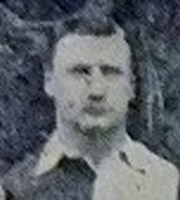
Edgar Field
Reading career: 1876-87
c120 appearances
c2 goals
Claim to fame: long-serving captain, England international and FA Cup winner.
Edgar Field was the best known of the three Field Brothers, from a Wallingford family, who played for Reading in the 1870s and 1880s. His brother Charles was inducted in 2017. A tall and heavy-set full-back he made his Reading debut in 1876 and was captain of the club from 1881 to 1888 but his principal honours came elsewhere. He won the FA Cup in 1880 with Clapham Rovers and caps for England against Scotland in 1876 and 1881 (becoming the first international to score an own goal!).
Read more...
Edgar was a leading figure in football in the area, frequently playing for the Berks & Bucks FA County XI and often refereeing local club matches. In middle age he moved away from the town and worked as an accountant in Derby. Amongst his records recently come to light was a photograph of the England team of 1876. It is the oldest England team photograph in existence.
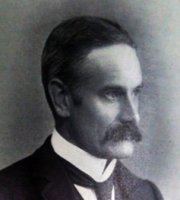
Stanley Hayward
Reading career: 1875-89
Apps: 200+
c7 goals
Claim to fame: Record appearance-maker for amateur Reading FC and one-time club secretary
A Reading man, initially a half back in 1875 but converted to a goalkeeper after two seasons and was a regular player until 1889. He was in Reading’s first Berks & Bucks Cup win in 1879, played for the Berks & Bucks FA and was regarded in his prime as a fine keeper worthy of England consideration. Hayward could be quite an attacking goalie, scoring six times from that position including two in a match once. With 200 known games Stanley is probably the record appearance maker for the amateur Reading FC.
Read more...
He became club secretary in 1883 (until 1889) and was also secretary of the Reading Cricket and Tennis Clubs. He became a successful businessman and accountant and served for 35 years on the Council, becoming Mayor of Reading in 1918 (the third of his team-mates from the 1870s to do so).
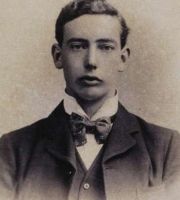
Tom Skurray
Reading career: 1884-1895
120 appearances
32 goals
Claim to fame: Connected the Coley Park era with the Southern League
Skurray was the young pirate who became the old war-horse. At 14 Tom was the captain of Reading Pirates and at 16 made his debut for Reading in 1884. At 17 he joined the Reading FC committee (until 1889) and started a chemistry degree at University College, London. Student life didn’t stop Tom from playing regularly on the wing in our Coley Park days. In later years he sometimes dropped back to the half-back line.
Read more...
He became an expert brewing chemist, working at Morlands in Abingdon, but still found the time to play at Caversham Cricket Ground after our move there in 1890. Tom was a member of our 1892 Berks & Bucks Cup-winning XI and continued to be an asset in our first Southern League season, 1894-95. Even at the time it was seen as remarkable that someone who played in front of 50 people at Coley Park could be playing in front of 4,000 in the Southern League 10 years later. The old war-horse, as he was called, had bridged the eras. In later life he became a nationally known spokesman for the brewing industry and a wealthy man.
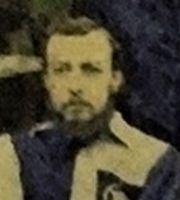
Thomas Henry Turner
Reading career: 1875 – 1888
c125 appearances
15 goals
Claim to fame: Totally dedicated club servant – even swam for Reading FC!
Thomas Turner was an intensely loyal and hard-working utility player and official for Reading FC, said always to be in the thick of the fight. He made his debut in 1875 and his last appearance in 1888. For many years he was deputy captain and also took on some secretarial duties which included “rounding the players” at a time when the club’s fortunes were at a low ebb. He was a member of the club committee from 1878 to 1889. He even swam for Reading FC – once finishing third in a 150 yards race.
Read more...
Thomas was the son of gun-maker, also Thomas Turner, and their premises were in the Butter Market, conveniently close the club’s Friar Street HQ. The family were long-standing Reading residents and the business survived, in name, into the 21st century, trading in Gosbrook Road. Thomas later became a town councillor and remained a staunch advocate of amateur football.
1890s
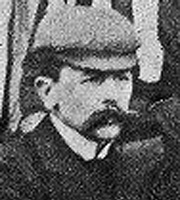
Horace Walker
Reading career: 1880-96
c100 appearances
c20 goals
Claim to fame: The man who saved Reading FC and turned it professional at Elm Park.
Horace Walker’s involvement in Reading FC lasted from 1880 – when he made his debut as a 16 year-old – until 1896 by which time he had fulfilled the formal roles of player-manager, secretary, treasurer, and chair of the committee. But this list of roles do not tell the full story of his influence on the club for, in the dark days of 1889-90, he essentially saved it from dissolution and re-made it into a modern outfit capable of sustaining a position amongst the highest rank of southern clubs.
Read more...
As a player Walker was a speedy winger and regular goal-scorer whose last match was in 1893. He was also a noted athlete across southern England. From a Reading family and from working at Huntley & Palmers he had connections throughout the local sporting realm that enabled him to reform the club. He was the bridge between the truly amateur days of Coley Park and the much better supported club in its Caversham days. As a result of his efforts he became the first life member of the club and was twice awarded a considerable honorarium (gift) by the members. He was a well-known and popular figure as both a football administrator and referee.
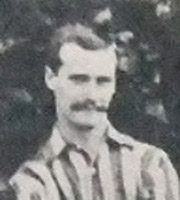
Joey Warburton
Reading career: 1890-95
c60 appearances
c40 goals
Claim to fame: The man who made sure Reading FC was called Reading FC.
Joey Warburton was a well-loved local hero who played several important roles in the decade that transformed Reading from a struggling amateur outfit to a nationally recognised professional club. He scored the vital goal in Reading’s first trophy win for 13 years, became club secretary at a key moment and soon after an important director when the club turned professional.
Read more...
Joey Warburton was born in Thatcham in 1867 and moved to Reading in his youth to work for Jackson’s general and scrap metal merchants in Oxford Road, eventually becoming managing director there. He was active in local football and cricket at a young age and played for Garfield and Earley before joining an improving Reading team and making his debut in September 1890. Joey played mainly as a right-sided forward. He was almost ever-present in 1891-92 and scored the opening goal in the Berks & Bucks Cup Final in 1892. Reading won 2-0. Thereafter he featured less regularly in the first team though he did play against Old Carthusians in 1894 (the programme still exists for this match) and a few times in our first Southern League season 1894-95. He was a popular mainstay of the reserves towards the end of his career.
When the club turned professional in the summer of 1895 Warburton retired from playing and took on the role of Club Secretary and almost his first act was to fight off the claims of the breakaway Reading Amateurs FC to the title of ‘The Reading Football Club.’ This he managed successfully. The club became a Limited Liability Company in 1897 and Warburton, with his long association with the club and his playing experience, became one of the most influential directors. He died in 1939.
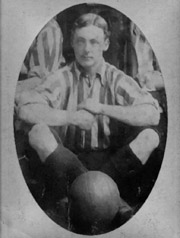
Frank Deane
Reading career: 1890-95
c160 appearances
c10 goals
Claim to fame: Last captain of amateur Reading who led a revitalised trophy-winning side.
Frank Deane was the last captain of Reading when it was an amateur club. He had been well-known as the captain of neighbouring Caversham FC before putting his main footballing efforts into Reading FC from 1890 for whom he scarcely missed a match thereafter.
Read more...
His transfer to Elm Park, despite the interest of Burnley and Clyde, was a major coup for Reading. Johnny was 33 when he signed in October 1898 and in November 1899 went on a FA tour of Germany and Austria. The FA XI won all four matches against the German and Austrian national sides by an aggregate of 38-4! Holt’s form was good enough to win one more cap in March 1900 and so he became our first professional England international.
He also became the first England player to win 10 caps without being on the losing side. Johnny carried on playing until he was 37, making 61 Southern League appearances for us. He scored his only two goals for the club in a 8-0 away FA Cup win at Wycombe. Upon retiring in 1902 he was elected on to Reading’s board of directors but had to stand down when the FA refused to reinstate him as an amateur.
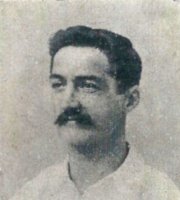
Johnny Holt
Reading career: 1898-1902
Apps: 112
2 goals
Claim to fame: The first professional Reading player to be picked for England
Despite standing just 5ft 4 tall Johnny was a formidable centre half who is credited with inventing the sliding tackle and was nicknamed ‘The Pocket Marvel’. He made his name at Everton, where he won the League championship and nine England caps.
Read more...
His transfer to Elm Park, despite the interest of Burnley and Clyde, was a major coup for Reading. Johnny was 33 when he signed in October 1898 and in November 1899 went on a FA tour of Germany and Austria. The FA XI won all four matches against the German and Austrian national sides by an aggregate of 38-4! Holt’s form was good enough to win one more cap in March 1900 and so he became our first professional England international.
He also became the first England player to win 10 caps without being on the losing side. Johnny carried on playing until he was 37, making 61 Southern League appearances for us. He scored his only two goals for the club in a 8-0 away FA Cup win at Wycombe. Upon retiring in 1902 he was elected on to Reading’s board of directors but had to stand down when the FA refused to reinstate him as an amateur.
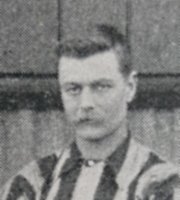
Stan Justins
Reading career: 1887-1897
Apps: 194
2 goals
Claim to fame: Loyal club man who played for both amateur and professional Reading FC
Stan played full back for Reading between 1887 and 1897 having learned his football with South Reading, often the second-best team in the town. His was an unusually long career for those days – even more so given that his career spanned both the amateur and professional eras on the club.
Read more...
Stan was deputy captain and acting captain of the club on many occasions. He was one of very few players of the amateur Reading FC to turn pro successfully. A level-headed man in a crisis on and off the pitch and key part of the successful early 1890s trophy-winning side and later made 39 appearances in the Southern League. Stan worked for GWR and in later life lived in Waverley Road, overlooking Elm Park.
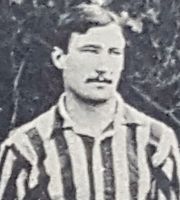
Henry Hewitt
Reading career: 1890-1893
40 appearances
52 goals
Claim to fame: Reading’s first crowd-pleasing star centre-forward
Henry Hewitt was the star centre-forward of the first Reading team that regularly drew four-figure crowds. He was a fast, skilful forward whose play was described as ‘spicy and full of vigour’ – a great shot and a brilliant dribbler capable of taking on defences on his own. Hewitt inspired secretary-manager Horace Walker’s revitalised Reading to many important victories including the significant re-capture of the Berks & Bucks Cup in 1892.
Read more...
He scored five in a game twice, including all five goals in a 5-5 draw at Clapton, and four three times (once against Tottenham Hotspur). In 1893 he moved to London and sadly missed the train to a vital (lost) FA Cup tie at Swindon. It was the beginning of the end! He later went on to play as an amateur for Clapton in the first Southern League season, 1894-95. His goals to games ratio must be one the best in Reading’s history though astonishingly his feats have rarely been recognised. He was also a prolific scorer for Reading Cricket Club with at least one unbeaten century to his name.
Before joining Reading in 1890 he had been the captain of Devon county team. Hewitt was born in India but studied in England, graduated from Oxford University and became a schoolmaster.
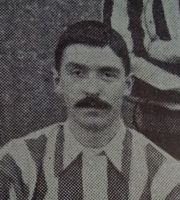
Phil Bach
Reading career: 1895-1897
36 appearances
3 goals
Claim to fame: Our first pro captain and a future England international
Phil joined Reading as a professional from Middlesbrough in July 1895, just weeks after the club decided to become professional. He was immediately appointed captain although he was only 21. The model of consistency at full back he was ever-present in his first season, being described as ‘sound rather than brilliant’.
Read more...
In his two seasons with Reading he made 33 Southern League appearances plus three in the FA Cup before moving to Sunderland, where he won his solitary England cap – in England’s record victory, 13-2 v Ireland. He moved back to Middlesbrough, first as a player and then spending 18 years as the club’s chairman. A renowned football administrator with both the FA and the League, it was Phil who suggested copyrighting the fixtures to prevent the football pools companies using them for free, a decision from which the game benefited by many millions over several decades.
1900s
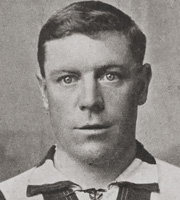
Fred Bartholomew
Reading career: 1904-57
FL 6 apps
SL 158 apps
9 goals
Reading total 178 appearances 9 goals
Claim to fame: Over half a century at Elm Park as player, trainer and groundsman.
Fred had a fairy-tale introduction to his Reading career – at Elm Park to watch a local cup final in Easter 1904, he was asked to make up the numbers for one of the teams and ended up scoring a hat-trick. He was immediately signed by Reading and he stayed for over 50 years, first as a player and then as a trainer and groundsman, retiring in 1957.
Read more...
Although mainly a right sided defender, Fred played in every position for the club, making 193 League, Southern League and FA Cup appearances, scoring 11 goals, a total that would have been much higher but for the War years during which he rose to the rank of Company Quartermaster Sergeant. Known affectional as ‘Old Bart’, Fred can claim to be among the club’s greatest servants and certainly among the most long-lasting. He had a sense of humour too. On being offered the captaincy by the manager in a bid to cut down drinking in the club he declined saying he thought he was one of the worst offenders!
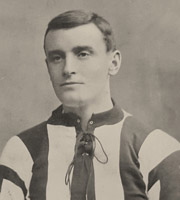
Herbert Smith
Reading career: 1900-09
160 apps
Claim to fame: Reading’s most capped England international, Olympic gold medallist and a true amateur sportsman.
One of the last great amateur players in the new age of professionalism, Herbert captained Reading for the first eight seasons of the 20th century, guiding the club to runners-up spot in the Southern League, our highest position there, and winning the Southern Charity Cup in 1905. He made 153 Southern League appearances and 7 in the FA Cup.
Read more...
His ‘dexterous left foot was almost legendary’ while he was ‘scrupulously fair’ and this led to him winning four full England caps in 1905-06 (still the most yet by a Reading player) plus 14 England amateur caps. He also won a soccer gold medal at the 1908 Olympics as well as captaining Oxford City to the final of the Amateur Cup. Herbert later acted as president for Oxfordshire FA for 32 years and is thought a genuine candidate for the title of Reading’s greatest player. Smith was described as ‘a total abstainer who smokes moderately’ and ‘is idolised by the players at his club’.
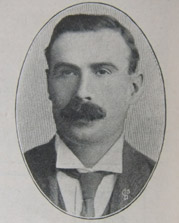
Harry Matthews
Secretary/Manager
Claim to fame: our longest serving manager and sometime club saviour.
Harry was a long-standing servant of the club whose involvement dates back to the mid-1890s when he was the secretary-manager of the reserves. By 1902 he had taken on that role with the first team and remained in that position until 1919, making him our longest serving manager by some distance.
Read more...
He was our first paid manager to pick his own team, albeit subject to the directors’ approval, and guided the club to their first professional trophies. A skilled administrator, Harry saved the club from several financial disasters and in 1911, when the board voted to wind up the club, he ‘forgot’ to minute the decision and raised enough public support to enable the club to carry on. Harry was particularly adept at finding star players from the Army and other unlikely sources. He had the hugely difficult task of sustaining the club during WWI with friendlies and matches in London League. In total he managed the club for over 500 peace-time first team games, three runners-up positions in the highly competitive Southern League Division One and the SL Division Two title at first time of asking in 1911.
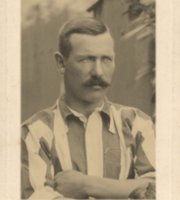
Ernie Watts
Reading career: 1896-1908
Apps: 177
8 goals
Claim to fame: Signed three times for Reading – once for just 12p!
Born in Woolhampton, west Berkshire, in 1872, former soldier Ernie was one of our first professional players. He signed from Tilehurst for the princely sum of 2/6d (12.5p) in 1896. Ernie had also previously played as an amateur guest in 1893 when serving with the Lancs Regiment, from whom we often borrowed players. At 5ft 10ins and weighing 12st 8, Ernie was a physical presence at either right half or occasionally as an emergency goalkeeper and was always known as ‘Big Wattie’.
Read more...
After three successful Southern League seasons, Ernie moved to Notts County, playing 17 First Division games for them before returning to Elm Park a season later. Virtually ever-present for the next four seasons, Ernie also played in an FA trial alongside a record four other Reading players; a trial that saw Herbert Smith picked for England. In 1903 Ernie was on the move again, playing for New Brompton (Gillingham) and Clapton Orient before a third spell at Reading, which saw him add just two more appearances to the 146 Southern League games he had played for us, having scored nine times. A fine all-round sportsman, Ernie also played cricket for Berkshire.
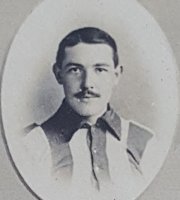
Billy Henderson
Reading career: 1897-1906
Apps: 177
Claim to fame: Tough and successful defender in a strong Southern League side
Midlothian-born Billy made more appearances for Reading in the 1910s than any other player, a total of 231 in all competitions (including 143 SL and 34 Cup). He was a tough-tackling defender who was warned by the directors over his persistent fouling on more than one occasion. Despite this, he signed for Reading three times with spells at Southampton and Everton in between.
Read more...
His physical play saw him form an impressive full back pairing with the more cultured Herbert Smith with great success. Billy missed only one match in 1904-05 when Reading finished runners-up in Southern League Division One and were joint-winners of the Southern Charity Cup in that same season. When his playing career had finished he emigrated to the USA to work in a Colorado salt mine!
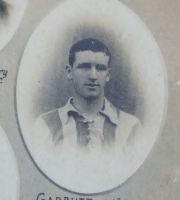
Willy Garbutt
Reading career: 1903-1905
8 appearances
1 goal
Claim to fame: The father of Italian football and source of our greatest European triumph
Widely known as ‘the father of Italian football’ Willy Garbutt’s Reading career was brief – only 8 Southern League appearances and one goal – but he also provided the link for our greatest (yet) European adventure – the 1913 tour of Italy.
Read more...
Garbutt joined Reading in 1903 from the Army but played only sporadically, mainly as a right winger. It was not until late in 1905 he had a decent run in the first team at which point he was snapped up by Arsenal for a ‘goodly sum’. In two and half seasons at Arsenal and four at Blackburn he made 134 First Division appearances retiring at 29 through injury.
He went Genoa, became manager there and won three league titles and was dubbed ‘the English Mister’. It was during his first summer there (1913) he was instrumental in inviting Reading to tour Italy and play Genoa, among the five matches arranged. During the tour Reading were credited with being the finest football team ever seen in Italy – a claim perhaps nowadays under some threat.
After Genoa (where he won Serie A three times) he also managed AS Roma, AC Milan and Athletic Bilbao where he won La Liga. Most of all he was revered as an important early influence on the great Italian coach Vittorio Pozzo who guided the Azzuri to two World Cup triumphs. He was also cricket coach at Genoa but that led to rather less!
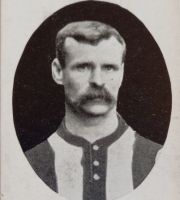
Billy Beats
Reading career: 1907-1925
216 appearances
5 goals and coach
Claim to fame: Somehow with us from the 19th to 21st centuries!
Born within days of the formation of Reading FC in 1871, Billy was a member of the first professional team to play against Reading, netting for Burslem Port Vale in that game in December 1892. He made his name with Wolves, where he scored 73 goals in 218 League appearances as well as playing twice for England.
Read more...
He joined Reading in the summer of 1907, initially as our trainer, but he was so impressive on the training pitch that he signed as a player that September. Billy extended his playing career with Reading for three more seasons, making 26 Southern League appearances, netting five times. He carried on as our coach until the start of the First World War before returning to Elm Park in the early 1920s, coaching the club until 1925. Billy stayed in Reading, running the Truro public house in Castle Street until 1936, during which time all three of his sons played for Reading Schools, with Eddie winning an England Schoolboy cap in 1920. He was given the honour of one share in the Football Club who were still writing to him at the Truro pub in 2001, some 30-odd years after it had been demolished and long after he died! Somehow his name and connections to the club spanned three centuries.
1910s
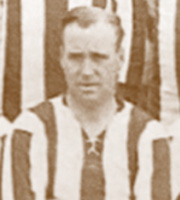
Allen Foster
Reading career: 1911-1915
146 appearances
67 goals
Claim to fame: FA Cup and European hero and WWI casualty.
Allen Foster joined Reading in August 1911, for a transfer fee of £75. He was virtually ever-present for the next four seasons and top scorer in each of those seasons, with a total of 67 league goals from 146 appearances. He is particularly remembered for two scoring feats, an FA Cup winner against Aston Villa and a hat-trick against AC Milan. Tipped for international honours, he was killed in battle in the First World War.
Read more...
Allen had begun his football career with Rotherham Town, a club playing in the Midland League (which later amalgamated with Football League club Rotherham County to form Rotherham United). Moving to Football League club, Bristol City in January 1909 he made 13 appearances; scoring one goal, before transferring into the Southern League with Reading in 1911. As a left-footed inside forward he formed a deadly partnership with Joe Bailey.
He scored a stunning volleyed winner in the FA cup 2nd Round replay against First Division, Aston Villa in February 1912, prompting a bid of £750 from Villa, which the Reading FC directors rejected despite the Club being in significant financial difficulties at the time. Villa were a leading side in that era as were Manchester United who Reading held in the next round (last 16) before losing in the replay.
During the Club’s successful end of season tour of Italy in 1913, he scored a hat-trick against Italian giants AC Milan in the Club’s 5–0 victory. The result prompted the leading Italian newspaper Corriere della Sera to report that “without doubt, Reading FC are the finest foreign team seen in Italy.” The following year he played and scored on Reading’s tour of Holland. He was tipped for an England call up but war intervened.
Allen was born in Rawmarsh, near Rotherham in South Yorkshire, in late 1887. Having married Beatrice Jennings in the spring of 1912 in Bristol the couple moved into a house at 14 Kent Road in Reading (literally yards from Elm Park).
During 1915 Foster, along with many other professional footballers volunteered for active service, joining the 17th Middlesex Battalion (The Footballers’ Battalion). At 4.00 a.m. on 8th August 1916 at Guillemont, on the Somme battlefield Allen was part of the 17th Middlesex attempt to attack German trenches north of the village. Early in the advance he was wounded in the arm, thigh and abdomen. After being recovered by stretcher bearers he was evacuated to a Casualty Clearing Station at Corbie, where sadly he died of his wounds. Allen is buried in Corbie Communal Cemetery Extension.
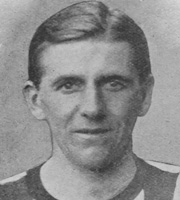
Joe Bailey
Reading career: 1911-21
201 appearances
9 goals
Claim to fame: A scorer of significant goals and a war hero to boot.
Achieving an incredible scoring ratio of one goal in every two and half games there have been few players who were more popular with Reading supporters than Joe Bailey. Although named Walter he was known as Joe and was nicknamed ‘Bubbles’, he joined Reading as an amateur in 1911, but after injury ruled him out of the 1912 Olympic squad he turned professional. A regular goal scorer throughout his career he forged a dynamic strike partnership with Allen Foster.
Read more...
As well as scoring in every one of the club’s five Italian tour games in 1913, Joe was our top scorer in the club’s last season in the Southern League and also the first season in the Football League; that included netting Reading’s first-ever League goal, against Newport County.
At the outbreak of the Great War Joe volunteered for the Middlesex Regiment’s Footballers’ Battalion as a private. He earned a commission and ended the war as a captain in the Suffolk Regiment, having been awarded the Distinguished Service Order and the Military Cross, with two bars, making him the most decorated officer in that regiment.
Joe left Elm Park in 1921 to become a cricket coach at Warwick School but not before the club had arranged a benefit game, for which he famously sold a ticket to the future King Edward VIII.
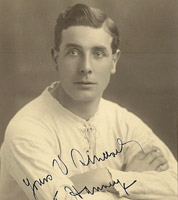
Ted Hanney
Reading career: 1910-21
123 appearances
11 goals
Claim to fame: Olympian, WWI hero and record transfer fee.
Born in Brock Barracks on the Oxford Road, where his father, John, was the Quartermaster Sergeant of the Royal Berkshire Regiment, Ted Hanney had Reading Football Club and the army in his blood. He was a tall, dashing defender and it is not too strong to say he was one of Reading FC’s greatest ever players.
Read more...
He was tough, but also quick and skilful; being selected for the 1912 Olympic squad and played in Great Britain’s 7-0 quarter final win over Hungary. Sadly he sustained an injury and could not play in the final as the team won gold by beating Denmark 4-2. On returning to Elm Park he signed professional forms but he was sold shortly afterwards to Manchester City, for a huge, at that time, £1,250 fee.
Ted volunteered to join the 17th Middlesex (Footballers’ Battalion) on 1st June 1915, and in the summer of 1916 found himself on the Somme battlefield in Delville Wood. Badly injured in several places he was evacuated home. He spent 37 days in hospital but just two months later he pulled on a blue and white shirt and played for Reading at Elm Park.
After the War, and following two seasons with Coventry City, he returned to captain the Biscuitmen. Some years later he coached in Germany with Stuttgart and Wacker Munich. Reading was always Ted’s home and he returned to the town, where he ran a pub and continued to take an interest in local football, running coaching sessions at Elm Park during the Second World War and was the Berks and Bucks F.A. Coach. Ted continued living in the town until his death in 1964 at the age of 75.
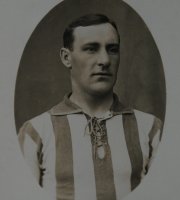
Jack Smith
Reading career: 1910-22
Apps: 252
Claim to fame: long-serving player who saved Reading from re-election
Captain and right back throughout the 1910s and into our first League season (1920-21), Jack Smith played more Southern League games for Reading (195) than any other player. He was born on the Wirral and had previously played for Blackburn and Portsmouth before joining Reading. He cost the measly fee of £5, possibly on account of the broken leg from which he was recovering, in the summer of 1910.
Read more...
Jack captained the first-ever Reading team to win promotion (from Southern League Div Two in 1911). After the war the club was elected to the newly-formed Division III but got off to a struggling start. In December 1920 Jack became our first player-manager and guided the club away from the threat of having to apply for re-election in our first League season – and that was the closest we ever came to such a fate.
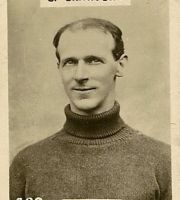
Syd Crawford
Reading career: 1913-22
157 appearances
Claim to fame: The greatest penalty-saving goalie in our history
Syd was a Scot who joined Reading in 1913 after First Division experience with Arsenal. Crawford was Reading’s regular goalie either side of WWI making 157 appearances.
Read more...
Reading were a strong Southern League side in those days finishing runners-up in 1915. Syd also played in our first Football League game in August 1920 and was a regular for two league seasons before joining Millwall.
He was a fearless keeper with an uncanny and unconventional knack of saving penalties, stopping over 50 in his career. Syd stood to one side of the goal tempting the taker to aim for the bigger space. His most famous save was in the last minute of an FA Cup tie against Chelsea. The save earned Reading a lucrative replay whilst causing his wife and a club director to faint! The replay was watched by 34,000 at Stamford Bridge – the largest crowd Reading had yet played before.
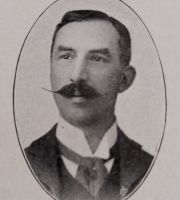
John Barnard Messer
Reading career: 1897-1914
Chairman
Claim to fame: First chairman of the professional club and saved it from collapse
He was the club’s first chairman after becoming a limited company in 1897 and helped guide the club through some very successful and not so successful Southern League and FA Cup years, including an ambitious yet doomed scheme to relocate the club at Garrard St, opposite Reading Station. Messer was chairman up to 1914 but two years later helped saved the club from folding thanks to his generous donation. It was said by the club secretary in 1916 that, during World War I, many of the directors had forgotten the club existed! One of our Southern League rivals, Croydon Common, did not return after the war. Messer enabled us to do so.
Read more...
He was born in Reading in 1860, educated at Reading School and died in the town 92 years later, very close to Elm Park. He was a town councillor, magistrate, local businessman of significance, a timber merchant and chairman of a steam laundry.

